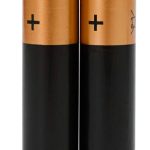Securing a cargo net to your Yamaha FJR1300 motorcycle can seem like a simple task, but doing it correctly can mean the difference between a safe, smooth ride and potential disaster. It’s not just about securing the cargo tightly; it’s also crucial to ensure that your bike’s paint job doesn’t suffer in the process. But don’t worry—we’re here to guide you through the process with the utmost clarity.
Choosing the Right Items for Your Motorcycle
Before we delve into the process, let’s talk about the importance of choosing the right items to secure your cargo. Not all cargo nets are the same, and using the wrong one may cause unnecessary damage to your bike.
Also to read : How can I optimize the fuel map settings on a Yamaha YZF-R6 for performance and efficiency?
When you decide to buy a cargo net, you will encounter many manufacturers who make different nets for various bike types. Therefore, reading the item’s description and reviews from other riders is crucial. You will want to look for a cargo net that is specified for use on Yamaha FJR1300 bikes.
It’s equally important to consider the quality of the net. A good net will be made from a durable, stretchable material that can withstand the elements and the pressure of the cargo. Don’t skimp on this item—buying a cheap, low-quality net may result in lost cargo and damage to your bike.
Have you seen this : How frequently should the hydraulic clutch fluid be changed in a KTM 1290 Super Adventure?
Also, consider purchasing some additional items to keep your bike’s paint job intact. These include a cargo net with plastic or rubber-coated hooks and some soft cloths or foam padding.
The Art of Placing Your Items
Now that you’ve selected the right items, it’s time to place your cargo. Good placement is critical for ensuring a safe ride and avoiding damage to your bike’s paint.
First, you’ll need to distribute the weight evenly. Don’t stack all your items in one spot. Instead, spread them out across the available space. This will help to maintain your bike’s balance and make your ride smoother.
Next, place the heaviest items at the bottom and the lighter items on top. This will prevent the lighter items from being crushed and the heavier items from falling off.
Finally, try to keep your cargo as compact as possible. The less your cargo shifts during your ride, the less chance there is of your cargo net rubbing against your bike’s paint.
Securing the Cargo Net
After placing your cargo, it’s time to secure the net. Start by stretching the net over your cargo, ensuring that it covers all items completely. The hooks of the net should go around the edges of your cargo, not over the top.
To protect your bike’s paint, use the soft cloths or foam padding between the hooks of the net and your bike. This will provide a barrier that helps prevent scratching or chipping of the paint.
Also, make sure that the net is tight enough to hold your cargo securely, but not so tight that it puts excessive pressure on your items or your bike.
Regularly Checking Your Cargo Net
Even if you’ve done everything right, it’s still essential to check your cargo net regularly. Over time, the net can loosen, or the hooks can shift, potentially damaging your bike’s paint.
Every few days, take the time to examine your cargo net. Make sure it’s still secure and that the hooks haven’t moved. If they have, adjust them as necessary and add more padding if needed.
The same applies during your ride. If you’re on a long journey, stop every so often to check that your cargo is still secure and your bike’s paint is unharmed.
Replying to the Unexpected
Despite your best efforts, sometimes unexpected things happen. You may hit a pothole, take a sharp turn, or encounter rough terrain that jostles your cargo. Therefore, it’s important to know how to reply in these situations.
First, stop as soon as it’s safe to do so and check your cargo. If items have shifted, take the time to rearrange them and adjust your cargo net.
Second, check for any damage to your bike’s paint. If you notice scratching or chipping, address it as soon as possible to prevent further damage. You can do this with some touch-up paint or by taking your bike to a professional.
Maintaining your Yamaha FJR1300 is not just about looking good but also about preserving its value. With these steps, you’ll be able to secure a cargo net properly on your bike without causing any damage to your bike’s paint.
Remember: the key is to be prepared, be vigilant, and always prioritize your bike’s—and your own—safety on every ride. Happy riding!
Fine-Tuning Your Skills: Adjusting and Re-adjusting the Cargo Net
Mastering the art of securing a cargo net on your Yamaha FJR1300 involves more than just the initial setup. One often overlooked aspect of this process is the importance of regular adjustments. As your journey progresses, road conditions, cargo weight shifts, or even weather changes can affect the tension and placement of your cargo net.
The key to maintaining a secure and paint-friendly cargo net setup lies in your ability to fine-tune your skills and adapt to changes. Regularly adjusting and re-adjusting the net during your ride isn’t just a safety measure, it’s also a strategy to prevent paint damage.
There are a few signs that your cargo net needs adjustment. For instance, if your bike starts to feel unbalanced or if you hear unusual noises coming from your cargo area. In such cases, it’s important to find a safe spot to pull over and check your cargo net.
Once parked, visually inspect the cargo net. The net’s hooks should still be in their original positions, and the net should maintain its tension. If you notice any loose hooks or slack in the net, it’s time for an adjustment.
To make an adjustment, simply unhook and rehook the net, making sure it’s snug but not overly tight. Remember to keep the soft cloths or foam padding between the hooks and your bike’s paint. If you notice any scratches or damage during your check, immediately apply touch-up paint to prevent further damage.
Conclusion: Prioritizing Safety and Maintenance for a Smooth Ride
Securing a cargo net on your Yamaha FJR1300 is not a one-size-fits-all task. It requires attention to detail, regular checks, and adjustments to ensure the safety of your cargo and the integrity of your bike’s paint job.
Starting with the right equipment is critical. Choosing a cargo net designed for your Yamaha FJR1300 and investing in protective materials like foam padding can set you up for success from the beginning.
However, a proper setup is only half of the battle. Regular checks and adjustments throughout your ride are equally vital in maintaining the secure fit of your cargo net and preventing paint damage.
In the face of unexpected situations like sudden turns or bumpy terrains, knowing how to respond is crucial. Always prioritize safety, both your own and that of your bike. Stop and check your cargo net setup at the first sign of instability or noise.
Finally, remember that your bike’s paint job is not only about aesthetics. It also contributes to the overall value of your motorcycle. By properly securing your cargo net and protecting your paint, you’re not only ensuring safe rides but also preserving the longevity and worth of your Yamaha FJR1300.
In the end, it’s not just about the destination, but the journey. And a smooth, safe journey begins with a properly secured cargo net. Enjoy the ride, and allow the road to take you to new adventures.











